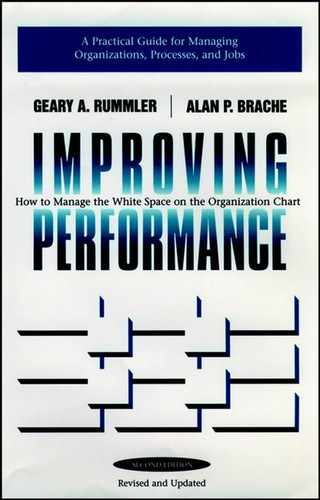14.2. Designing an Organization Structure That Works
Ace Copiers, Inc., is a real organization whose name and product have been somewhat modified for presentation here. To establish an organization structure that works, Ace followed the nine-step process just described. An outline of that process, with selected artifacts, follows.
Step 1: Establish a Clear Strategy. Ace Copiers designs, manufactures, distributes, and services office photocopy machines and accessories. During an eighteen-month period, its previous trend of rapid growth slowed, and it lost a significant portion of its market share. Ace introduced only two new products in three years, which was far below the industry average. The development and production of both products went over budget, and neither copier sold well.
These problems motivated Ace's management committee to go through a period of soul searching. They went off to the mountains and returned with a comprehensive strategy. An integral part of that strategy was to introduce two new products during each of the next five years.
Step 2: Document and Analyze the Current ("Is") Organization System. Figure 14.3 displays Ace's original organization chart. Figure 14.4 shows the original Relationship Map and its disconnects.
Step 3: Document and Analyze the Current ("Is") Processes. Given its strategy and the disconnects in its system, Ace identified product development and introduction as its most critical process. A cross-functional group developed an "Is" Process Map and identified the disconnects.
Step 4: Develop "Should" Process Flows and Measures. Figure 14.5 displays a portion of the "Should" map that the Ace team developed for product development and introduction. After completing the map, the team developed a set of measures for product development and introduction. Those measures led to a set of standards:
New products will achieve sales volume and dollar goals.
New products will be introduced (from conception to field training and production of the first five thousand units) within nine months.
Unit cost of new products will be within established budget.
Development and introduction costs will be within established budget.
Figure 14.3. Ace Copiers, Inc., Original Organization Chart.

These end-of-line measures and standards spawned submeasures and standards at critical junctures in the process.
Step 5: Design the Organization Chart. As the steps in the "Should" product development process were being entered into the bands in the Process Map, the team members were assigning responsibilities to each function. They decided to split the old product development function into product design (which did the conceptualization) and product engineering (which was responsible for the internal and external configuration of the copier). The new product design function combined with marketing and sales to form an integrated field operations unit.
This field operations structure enabled Ace to make faster product development decisions and to speed up the implementation of those decisions. The establishment of the product engineering function in manufacturing enabled Ace to configure copiers that could be made at a lower cost.
Before the organization chart was finalized, it was tested against other key Ace processes. Ace wanted to make sure it didn't establish a structure that optimized its product development process and suboptimized other critical processes. (If functional isolation can be illustrated by silos, perhaps process isolation can be seen as tunnels.) Figure 14.6 displays the new Ace organization chart. Figure 14.7 displays the new Relationship Map.
Figure 14.4. Ace Copiers, Inc., "Is" Relationship Map and Disconnects.

Figure 14.5. Ace Copiers Product Development: Partial "Should" Process Map.

Step 6: Develop Function Models for Each Department. To make sure that the responsibilities of the new functions were clear, the Ace team developed a product development Role/Responsibility Matrix. A portion of this matrix appears in Table 14.1. Measures and goals were added to the process responsibilities assigned to each function. These responsibilities (outputs) and goals became each department's Function Model (see Chapter Twelve).
Step 7:Develop Job Models for Each Job. Task teams in each department used the Function Model as the basis for developing a Job Model for each job that contributed to the product development process (for instance, sales representative, market research analyst, and design engineer). These Job Models contained the outputs that incumbents were expected to produce to contribute to the function outputs, and the goals they were expected to achieve for each output.
Step 8: Structure the Human Performance System for Each Job. For each job, the required feedback, rewards, and training were specified.
Step 9: Establish Management Processes. Once the new organization was established at the Organization, Process, and Job/Performer Levels, Ace installed an infrastructure for managing all three levels. The top management team created a series of management processes to ensure that goals were continuously set, performance was tracked against these goals at all three levels, resources were allocated so that the product development process was optimized, interfaces were managed, and all components of the Human Performance System were managed. These responsibilities became the core of the managers' performance appraisal.
Figure 14.6. New Ace Copiers Organization Chart.

Figure 14.7. Ace Copiers "Should" Relationship Map.

